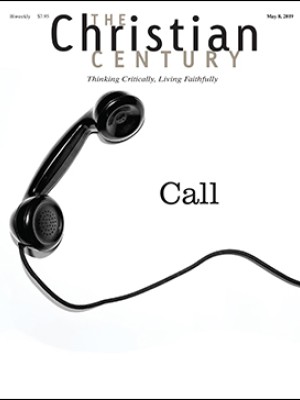Three black churches in Louisiana, civil rights center in Tennessee burned down
A 21-year-old white man faces hate crimes and arson charges for the church fires, and a white supremacist symbol was spray-painted at the Highlander Center.
Fires destroyed three predominantly black churches in St. Landry Parish, Louisiana, as well as the main office of the Highlander Research and Education Center near Knoxville, Tennessee, in late March and early April.
A 21-year-old white man was arrested and charged with arson for the fires at the historic Baptist churches in Louisiana, “where the flame-gutted remains of the buildings evoked memories of civil rights era violence,” the Associated Press reported. A week later, charges of hate crimes were added, according to the New York Times.
Ashley Rodrigue, a spokeswoman for the state fire marshal, said that an unusually high number of investigators were tasked with determining the motivations for the fires. That included 40 federal staffers, including agents from the FBI and the Bureau of Alcohol, Tobacco, Firearms and Explosives, 40 state agency workers, and 20 people from local agencies.
Read our latest issue or browse back issues.
Michael P. Knight, ATF special agent, said that its US Bomb Data Center was “looking at fires not only in that area but around the country to see if there’s any similarities or patterns or trends of other fires that have occurred outside of the state.”
In the days following the blaze at the Highlander Center in the foothills of the Great Smoky Mountains, the local sheriff said the fire may have been intentionally set, after a “symbol connected to the white power movement” was found spray-painted in the parking lot. In a sign of growing concerns about such acts, on April 4, FBI director Christopher Wray testified before Congress that white supremacy is a “persistent, pervasive threat” to US security.
Ash-Lee Woodard Henderson, co-executive director, said she received no warnings that white supremacists might be targeting the center, known for training many of the leaders of the civil rights movement.
“We’re an 87-year-old organization,” she said. “This isn’t the first storm we’ve weathered.”
Henderson was back at work the following week in one of the center’s other buildings. Investigators had yet to allow her to sift through the remains to assess what was lost, though most of the center’s archives are safe at the Wisconsin Historical Society. Other historical documents are at the Southern Historical Collection and Southern Folklife Collection at the University of North Carolina at Chapel Hill.
But the center’s commitment to a range of issues—immigration, prison reform, the environment, worker rights, and racial, gender, and sex discrimination—have made it a target for hate groups before. In 1966, the Ku Klux Klan firebombed it.
“This isn’t disconnected from a long legacy of the targeting of southern movement infrastructure,” Henderson said.
The Highlander Center was opened in 1932 during the height of the Great Depression by cofounder Myles Horton, a Tennessee native strongly influenced by theologian Reinhold Niebuhr, with whom he studied at Union Theological Seminary in New York City. Niebuhr wrote the initial fundraising letter to establish the school.
Martin Luther King Jr. famously attended Highlander’s 25th anniversary in 1957. During his stay, a billboard nearby posted his photo and said he was attending a “Communist training school.”
“All the progressive issues of the nation that often bypass the South were held up like a beacon of light by the Highlander Center,” said William Ferris, professor of history emeritus at the University of North Carolina at Chapel Hill.
Henderson said the center, which engages with some 6,000 people annually, will continue to do so.
“People who have felt their lives transformed by being in connection with this sacred space are flanking and supporting and showing up to share their Highlander stories,” she said.
While Highlander can receive donations through its website, a crowdfunding campaign was set up for the Louisiana churches. As of April 16, it had exceeded its $1.8 million goal.
Fires and other violence have plagued African American churches in the South for decades, particularly in the 1960s and the 1990s.
In 2015, more than half a dozen black churches burned after the massacre that killed nine people at Mother Emanuel African Methodist Episcopal Church in Charleston, South Carolina.
A version of this article appears in the print edition under the title “Black churches in Louisiana burned down.” The online version was edited April 22.






